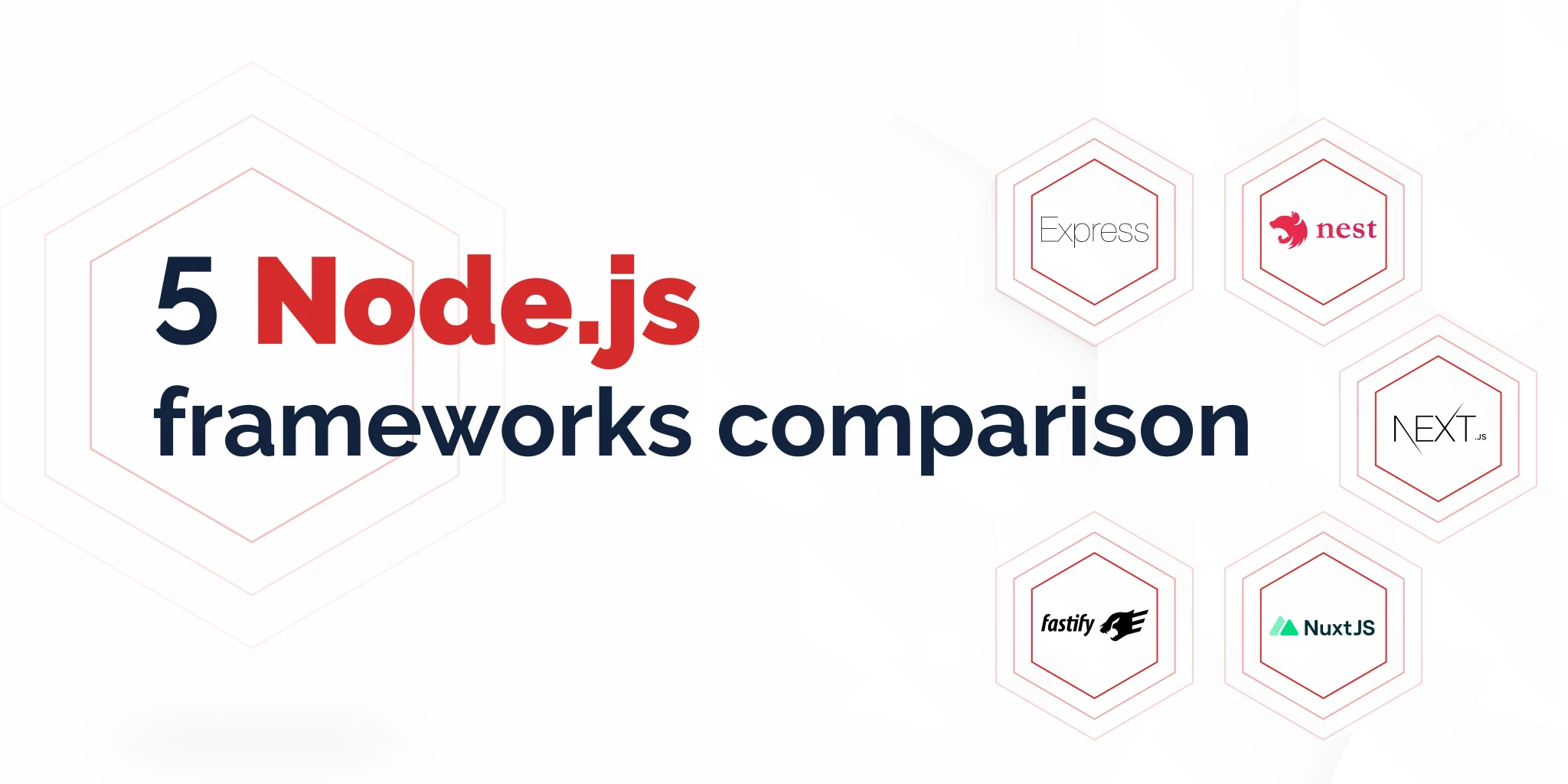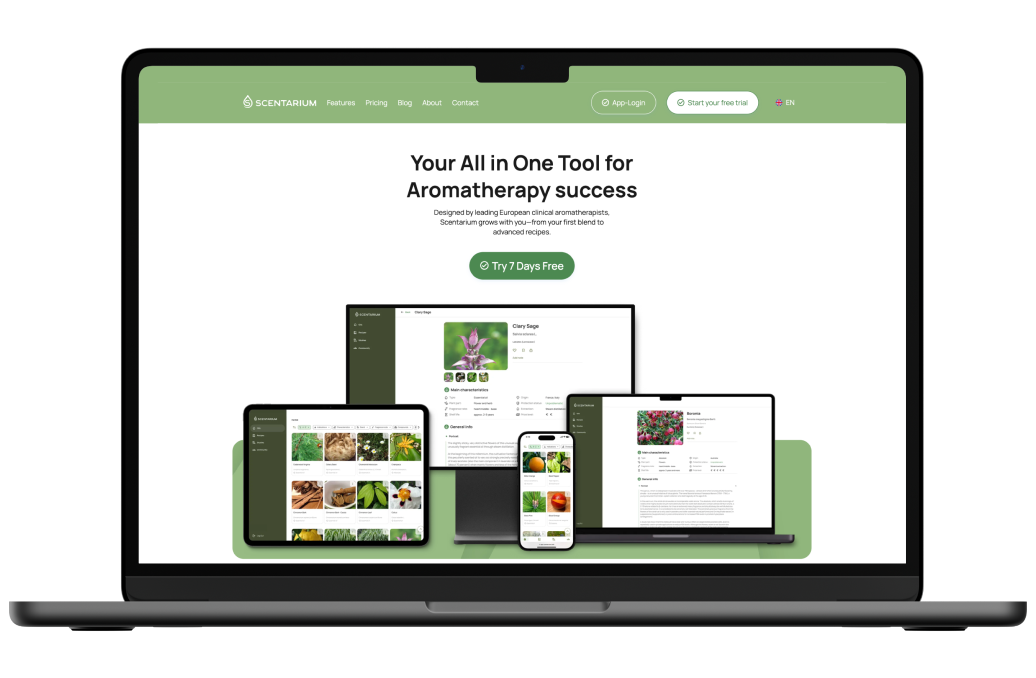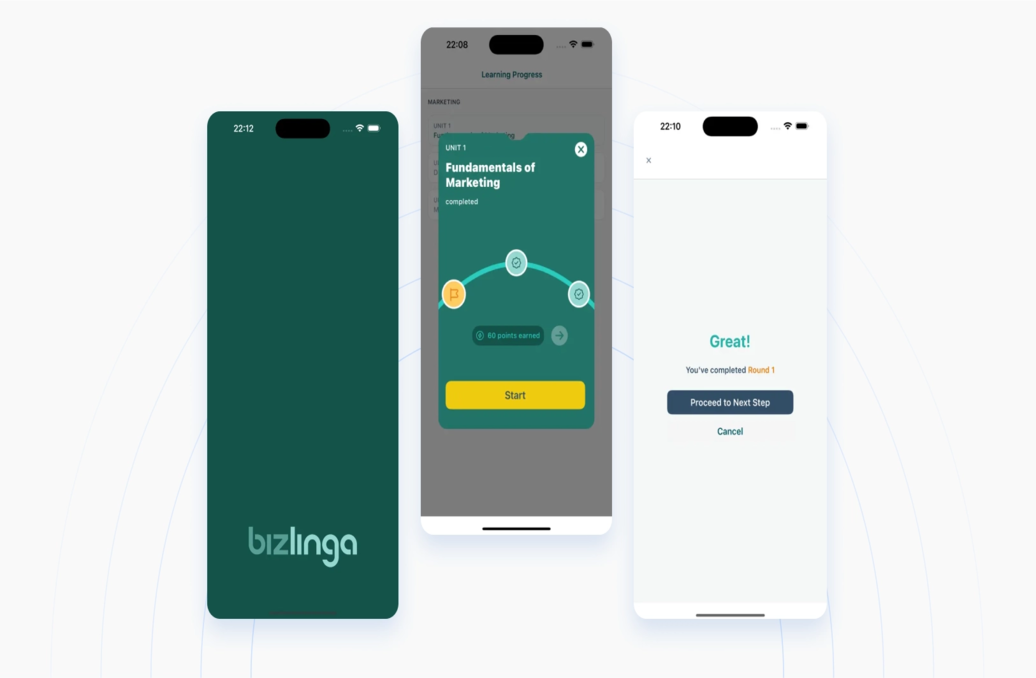Discovering top Node.js frameworks and finding out how they can boost developer productivity and app performance
There are many trendy technologies in the world of web development. But if we’re talking about Node frameworks, don’t you wonder how the framework became so popular in the short term?
The explicit benefit of Node.js is that it’s one of the fastest server-side web app platforms. Companies can quickly build scalable apps in a single programming language by employing it. It’s an open-sourced JavaScript framework incorporating cross-platform features. Clean codebase, agile development, and vast ecosystem providing open-source libraries are compelling advantages. Our aim isn’t to highlight the best Node.js framework but to provide you with Node.js popular frameworks, among which you can choose yourself.
Is Node.js a Framework?
Node.js is an open-source run-time environment providing a set of tools and development structures to help developers work more efficiently. It’s created to operate servers on various operating systems and devices. It uses JS as its primary programming language, and it is preferred for designing web-enabled mobile apps. Thanks to its comprehensive collection of JS modules, Node.js brings the ease of creating fast and scalable network programs and cross-platform properties for writing codes outside the browser.
Many argue what Node.js is: a framework or a language. Let’s dig up the basic concept. In Node.js, “JS” stands for JavaScript and should be somehow connected to it. If Node.js comes from JS, it may be the framework of JS. It’s the rule we note with other languages and their frameworks. However, if it’s that simple, you wouldn’t read an article like this on our blog.
There are two types of languages. The programming language requires a compiler to compile the code, and the scripting language needs the interpreter to produce code in run time. Initially, JS was created to “alive pages” and interact with the user. However, with technical advancement, we got new terminology, Node.js. Based on the above definitions, Node.js can be neither a framework nor a language.
The interpreter executing the code is included in Node.js separately. Node.js uses the chrome v8 engine to run JS on a platform. The engine combines an interpreter and multiple tools allowing v8 to work on a server without a browser. Using Node.js, we can do many things (input/output, file processing) that aren’t possible with JS.
At last, Node.js is neither a framework nor a language. It’s an open-source development platform for producing JS code outside the browser.
Why Node.js Frameworks?
Node.js frameworks deliver easy scalability, excellent functionality, a low learning curve, full-stack JS benefits, a large active community, and a single codebase, increasing the overall performance.
Creating the entire app from scratch is a complex and time-consuming task. As developers, we need to build apps faster and more efficiently. So, the frameworks provide us with useful functions and tools to facilitate the work. Using frameworks, we benefit from a more straightforward API, a clean code, and the ability to structure our app correctly. With specific functions of Node.js frameworks, we can implement the right solutions.
Types of Node.js Frameworks
In web development, a significant number of frameworks may overwhelm you. For this reason, it’s easier to learn the types of Node.js frameworks, understand their philosophy, and move to the list of the best frameworks for Node.js you can use in web development.
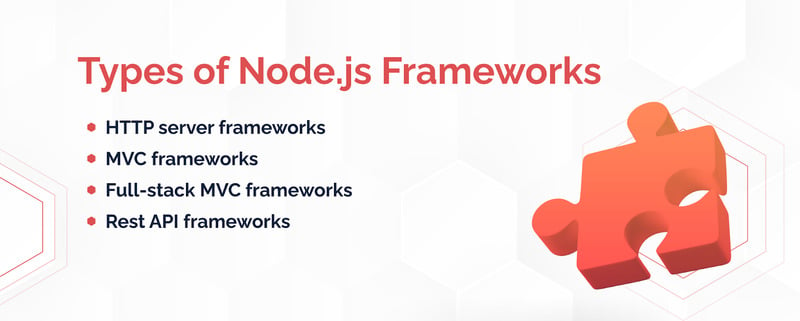
- HTTP server frameworks are based on Express.js, assisting you in creating applications based on HTTP routes.
- MVC frameworks provide Model, View, and Controller architecture. MVC splits the functionality of the app into three parts. Models manage data logic and show the way the data is stored. Views control the way the information is presented to the user. Controllers manage request flows and handle information between the model and view. In turn, the controller gets the data from the model and transfers it into the view.
- Full-stack MVC frameworks use JS on the client and server sides. They incorporate many features, including WebSocket libraries, templating engines, and ORM programming technology.
- Rest API frameworks are used to drive a fast Node server or manage CRUD requests.
How to choose the best Node.js framework?
A similar question appears on various forums and social media, and the replies tend to be full of solid views. Some developers can even argue about this issue. However, if none of the responses still didn’t help you, we want to provide you with the below-mentioned points.
With so many frameworks to choose from, it’s easy to become lost. The answer won’t be relevant enough if comparing Node.js frameworks is just based on their architecture and features. It’s because it’s only a tiny fraction of the whole picture. As a result, it’s best to create a straightforward checklist to make a Node.js frameworks comparison by yourself using the items on the list. I can’t present an exhaustive checklist for you because it depends on different factors, including the requirements of all parties, including the project, team members, and developers. But, I have some suggestions that may help you decide what is critical when selecting an appropriate and best Node.js framework.
Choosing one Node.js framework matching your requirements and the needs of your web app is challenging. Different factors may influence your decision.
However, considering the criteria such as scalability, ecosystem, and functionality of a specific framework simplifies the task:
- Before making your choice, you should analyze if the framework doesn’t limit you in particular ways of implementing the project.
- You’ll benefit if the framework has an active community and provides educational materials.
- Functionality is a subjective factor that may vary for different projects.
Based on your project type and requirements, you can determine if there are functionalities ranging from support declared programming and cluster management to packaging support.
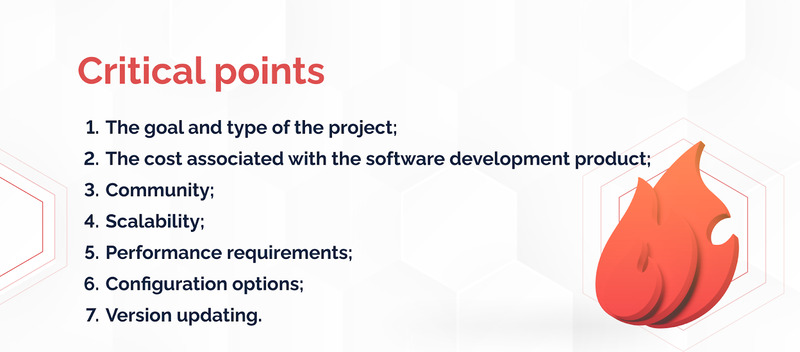
Let’s dive into critical points you should keep in mind when choosing the best Node.js framework:
- The goal and type of the project;
- The cost associated with the software development product;
- Community;
- Scalability;
- Performance requirements;
- Configuration options;
- Version updating.
In summary, web and mobile applications have become necessary in the modern tech market. Selecting the proper framework not only improves your software product’s overall performance but also helps minimize costs, time, and other critical resources. We’ve listed top Node.js frameworks such as Express.js, Nest.js, Next.js, Nuxt.js, and Fastify. If you’re interested in the topic and some questions arise, you can always contact us, and our experts will offer you the right solutions.
Top Node.js Frameworks You Should Know About
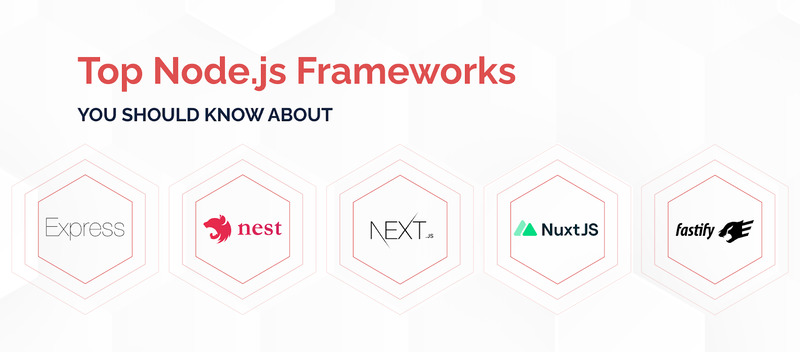
You can picture Node.js as external scaffolding with plenty of frameworks of Node.js extending its functionalities. They also help simplify app prototyping and its development.
Instead of reinventing the wheel over and over, we’ll review time-tested Node.js best frameworks used widely in web development. We’ll compare their functions, selling points, and companies using them in web development. Our list involves Express.js, Nest.js, Next.js, Nuxt.js, and Fastify.
Express.js
Express.js tops the list of Node.js popular frameworks. Developers consider it to be a minimalist, flexible framework with an extensive set of functions to build web and mobile apps. The framework presents a layer of web apps’ key functions allowing you to work with Node.js functionality. Express.js development, allows using both relational (MySQL) and non-relational (MongoDB) databases. Additionally, you can use various modules for verifying and formatting data.
Its fast, simple, and robust coding architecture aligns well with Node.js technology. If you have basic competence in the Node.js environment, you’ll efficiently deal with Express.js. It has a more reliable app UI with better-organized client-to-server requests and transparent user interactions. Express.js powerful functions allow taking backend development to a new level. Tech giants such as Twitter, Uber, Accenture, BlaBlaCar, and Stack deploy apps using the framework.
With Express.js, you can easily reuse code for data processing, store user sessions, control cookie files, and manage payloads. Express.js is a clear favorite for dynamic content. It produces quick responses to the user requests like uploading text, audio/video content, and other content to the page.
It continues to gain more popularity among users. Each year, the number of websites built with the framework is increasing.
Its main benefits are:
- fast app development
- input-output requests
- open-source community
- ease of use and learning
- promising stable technology.
Nest.js
Nest.js has become the fastest-growing Node.js framework due to its incredible features. It’s an open-source and versatile framework helping to create demanding systems. Developers use Next.js to make efficient and scalable server-side apps written in TypeScript.
Nest.js architecture is based on several simple components like controllers, modules, and providers, helping efficiently to split apps into microservices. Moreover, Angular and RoR inspired its architecture. Nest.js uses TypeORM, a popular and promising ORM often used even without Nest.js. Being a mature ORM, it’s available for TypeScript. Using Nest.js development, you can write scalable applications. Also, it takes Node.js servers to a new level. Here, you can use several databases like MongoDB, MySQL, and PostgreSQL.
It has a good rating position on GitHub and encourages more developers to learn and test the framework. Nest.js is extensible, and it’s one of the benefits. It’s universal thanks to its fully-fledged ecosystem and can be used with other libraries.
We consider the framework is easy to master:
- It has a robust command-level interface making app development faster and simplified.
- Nest.js is an open-source framework under MIT license showing its reliability.
- It has well-written and maintained documentation, active codebase development, and control.
Adidas, Autodesk, Roche, Decathlon, Capgemini, and Societe Generale have already used the framework in their development.
Next.js
Next.js is a promising developing Node.js framework that requires discussion. Next.js is a reasonable solution since you can test many benefits for clients and the development team. Improved development process, app performance, and SEO refer to the benefits you get. Using the framework, you can save costs and time and get faster and more indexable SEO-friendly apps.
Initially, Next.js positioned itself exclusively as a “backend for frontend” or “middle-end.” Though, the latest versions of the framework have functionality allowing to utilize Next.js as a full-fledged backend framework. In this way, the framework brings developers another direct benefit. One of the beneficial features it delivers is authentication. Automatic code splitting boosts the performance of the user’s browser and allows users to see page content faster.
The critical benefit not as much for the users as for the developers is hot module replacement. It helps developers see all changes in real-time. Unlike regular real-time updates, it reloads only the changed modules during development. Netflix, Uber, Starbucks, and Nike widely use the framework.
Another point to mention is that Next.js was built on top of React. Thanks to React, Next.js should have become an easy-to-use development framework. Next.js is smart enough to load only the JS and CSS needed for a specific page. It significantly decreases the loading time of the page. The users shouldn’t waste time waiting for JS and CSS downloading, which they don’t need.
Nuxt.js
Nuxt.js is getting more popular and progressive today. It was introduced before Next.js and is a worthy competitor for Next.js.
Nuxt.js is a high-level front-end framework built on top of Vue. It incorporates efficient features like rendering on the server-side, automatically made routes, improved SEO, and control of metatags and SEO. Nuxt.js has plenty of features to enhance developer productivity and user interaction.
The framework simplifies the creation of single-page or universal Vue.js applications. Using Nuxt.js, you can focus only on web app development. The framework is flexible, simplifying the developer’s work and allowing them to use the framework as the main project base.
Nuxt.js development helps to create universal applications without effort. Building universal apps is a tedious process. It usually requires a lot of configuration on the server and client sides. Nuxt.js solves this issue. This one of the top Node.js frameworks readily shares the code between server and client, and the user can focus more on app logic. Moreover, thanks to properties like is-server and is-client provided by Nuxt.js, the user can quickly and easily decide where to make rendering. A unique component no-SSR allows the user to prevent rendering on the server-side.
The framework provides a starter template with organized folders showing all the details of starting the project. The Nuxt.js community on GitHub can help you a lot. To get the maximum benefit of the framework, you can check all categories given by the community and choose the one matching your purpose.
Fastify
Fastify is a Node.js web framework focusing on delivering the best developer experience. The framework is highly performant, extensible, schema-based, developer-friendly, and TypeScript-ready. Fastify introduces itself as a fast, low-overhead Node.js framework with a robust plugin architecture. It’s inspired by Express and Hapi.
Though Fastify.js doesn’t provide all solutions for everything, it actively develops and improves its functions. It’s an analog to Express.js but with faster capacity and less overhead costs. The framework was initially designed as a general-purpose framework, but when it comes to fast HTTP APIs, Fastify.js is excellent. Compared to Express.js, Fastify.js works twice as fast. The speed difference comes from Fastify.js having a better user base and managing empty requests more efficiently than Express.js. Complete encapsulation for plugins, quick routing, faster rendering, cleaner syntax, faster performance, progressing language, and runtime are the core features of Fastify.js.
A little update! Due to the outstanding effort of the Fastify team and community, the 4th major version of Fastify is launched after two years. It has been updated to provide new developer-friendly features. Fastify’s most recent version is a huge hit, with over one million monthly downloads.
The new version prioritizes enhancing the developer experience, boosting main dependencies, stabilizing the API, and more. Fastify 4th comprises roughly 20 minor updates that have no significant impact on productivity or developer experience. It indicates the framework’s high level of stability.
Let’s take a quick look at the significant features of the new Fastify version:
- New error handling system
- Non-standard type of providers
- Rapid cold start
- Long-term maintenance
Koa.js
Koa.js is a popular technology among developers looking to create lightweight and flexible web apps with Node.js. Designed by the creators of Express, Koa aims to be a smaller and more expressive as a foundation for web apps and APIs. By leveraging async functions, Koa allows you to ditch callbacks and greatly increase error-handling capabilities. This feature simplifies the control flow and reduces the lines of code, enhancing the development of applications. Koa’s middleware flows in a stack-like manner. As a result, it allows you to perform actions downstream, and then filter and manipulate the response upstream. Koa doesn’t bundle any middleware within its core, which means it provides a lean and rich ecosystem for developers to select exactly what they need. The choice here ranges from security features like security headers to template engines, offering a wide range of possibilities for building complex applications including real-time services. Besides, its minimalist approach encourages the use of additional libraries. Consequently, this framework is ideal for developers looking to have more control over their application’s architecture.
Meteor.js
Meteor.js is a full stack framework that enables rapid software development. This platform is known for its real-time synchronization features, allowing for the development of real-time apps like chat apps and multiplayer games with minimal effort. Meteor’s data-on-the-wire approach ensures that data updates are automatically propagated to clients without requiring the developer to write any synchronization code. This bidirectional communication capability is powered by its DDP protocol, which offers out-of-the-box, real-time capabilities. Meteor is highly extensible and integrates with a wide range of packages and tools, including popular template engines. In this light, the platform supports the creation of complex and hybrid web apps. Its rich ecosystem includes packages for everything from social authentication to security features, significantly reducing the lines of code needed to build robust apps. Meteor’s emphasis on convention over configuration, coupled with its full-stack nature, makes it an attractive choice for developers looking to build interactive, real-time apps efficiently.
Sails.js
Sails.js is an MVC (Model-View-Controller) app framework designed to emulate the familiar MVC pattern of frameworks like Ruby on Rails, but with support for the more modern, data-driven style of web app and API development. Sails is especially good for building real-time features, such as chat applications and multiplayer games, due to its built-in support for WebSocket. It uses Waterline for database work, which provides a simple data access layer that works regardless of the database you’re using. Using this approach, the platform enables easy development and scaling of applications. Sails comes with blueprints that automatically generate REST APIs, reducing the amount of code developers need to write. This framework integrates seamlessly with any frontend layout, be it a traditional server-rendered web app or a more complex single-page application. Consequently, Sails is one of the most flexible choices for developers. It has a rich ecosystem of plugins for adding features such as security or authentication. As a result, it ensures developers have a wide range of tools at their disposal for building complex applications.
Hapi.js
Hapi.js is an application framework for building web services such as REST API or real-time chat applications. It shines with its powerful plugin system, allowing developers to add new features or tweak the server’s functionality as needed. Hapi’s architecture is designed around the concept of middleware functions called extensions, which are executed at various points in the request lifecycle, providing a flexible method for managing the server’s behavior. Hapi is well-regarded for its built-in support for input validation, caching, authentication, and other security features, making it easy to develop secure applications. The framework’s focus on configuration over code helps in creating more maintainable and scalable applications with fewer lines of code. Hapi supports a wide range of plugins, including those for template rendering and securing applications by automatically applying security headers. Consequently, it’s a solid choice for developers looking to build robust, complex apps with a rich ecosystem of tools.
Total.js
Total.js is a full-stack JavaScript framework that supports the rapid development of efficient, scalable web applications. It’s designed to cater to a wide range of apps, from simple websites to complex enterprise-level solutions. Total.js is unique in its support for both the server-side and client-side, making it a versatile choice for building hybrid web apps. It provides a comprehensive suite of features including support for real-time communication, web sockets for bidirectional communication, and synchronization of data in real-time apps.
The framework boasts a rich ecosystem that includes everything from template engines to additional libraries for security features. Its architecture is designed to minimize the amount of code necessary for building applications. In this way, the platform simplifies the development process and makes it more accessible for developers of all skill levels. Total.js emphasizes on performance and security, offering built-in mechanisms for managing security headers, file uploads, and session management. Consequently, it enables the development of secure and high-performance apps. With its modular structure, Total.js facilitates the creation of scalable solutions that can handle complex requirements and high loads efficiently.
Socket.io
Socket.io is a popular technology for building real-time web applications. It offers a client-side library and server-side platform for seamless bidirectional communication between web clients and servers. The library shines in scenarios requiring real-time synchronization, such as live chat apps and multiplayer games, thanks to its efficient use of WebSockets and fallback options for compatibility. Socket.io is celebrated for its ease of use, with just a few lines of code enabling complex apps to support real-time event structures. Its secure default settings and ability to integrate additional libraries enhance its utility in developing scalable network apps. The framework supports both frontend developers in crafting responsive interfaces and an average backend developer in managing app logic and data flow. With a huge community backing, Socket.io provides a rich code snippet database, custom logic solutions, and code sharing opportunities, fostering code reusability and accelerating the development of interactive, real-time apps.
Adonis.js
Adonis.js stands out as a full-stack framework that leverages Node js code to streamline the development of web and desktop app projects. It provides a secure default environment, integrating modern practices and tools to ensure apps are robust against threats. With its elegant syntax and focus on developer ergonomics, Adonis.js simplifies code generation, application logic structuring, and custom logic implementation. It’s designed for both frontend and backend developers, offering a cohesive environment for code sharing and reusability. The framework has a huge community and extensive documentation. Consequently, it’s a popular technology for building some form of a scalable network app. Adonis.js supports reactive programming paradigms: they allow developers to build dynamic, real-time apps with efficient data synchronization. Its rich set of features and additional libraries make it a comprehensive solution for developers seeking a productive and modern development experience.
LoopBack.js
LoopBack.js is a highly extensible, full-stack framework known for being useful in creating scalable network apps. It offers a powerful suite of features for connecting backend systems and services using customizable APIs. LoopBack.js facilitates secure default configurations and simplifies the development process through code generation tools, allowing developers to focus on the unique aspects of their app logic. It supports reactive programming, which enhances the development of real-time apps with seamless data synchronization. The framework’s design is aimed at both frontend and backend developers because it promotes code sharing and reusability across the development stack. With a huge community and comprehensive documentation, LoopBack.js aids developers in rapidly prototyping and deploying complex apps. Its ability to integrate with additional libraries and support for Node.js code make it a versatile and popular technology for developing everything from enterprise-level apps to custom logic for small projects.
Derby.js
Derby.js is a MVC (Model-View-Controller) framework designed for writing scalable and real-time web applications. It uniquely combines server-side rendering with client-side interactivity, enabling fast page loads and real-time updates. Derby.js embraces reactive programming: it allows developers to build apps where the UI seamlessly updates in response to data changes. This framework supports code sharing between the server and the client. Such an approach reduces the effort needed for code generation and ensures consistency across the apps. Its secure default settings and structured approach to app logic help in creating reliable and maintainable apps. Derby.js is suitable for both frontend and backend developers, promoting collaboration and code reusability. The framework has a supportive community and provides extensive resources for learning and development, making it a popular technology for developers aiming to build interactive, data-driven web apps.
Feathers.js
Feathers.js is a lightweight web framework for creating real-time applications and RESTful services rapidly. It wraps around JavaScript to offer a flexible and modular architecture, promoting the rapid development of scalable network apps. Feathers.js can be used as the backbone for any web, desktop, or mobile app. It emphasizes secure defaults, code reusability, and custom logic. As a result, the framework is a powerful tool for developers who need to implement complex app logic with minimal boilerplate. The framework supports real-time synchronization out of the box and integrates seamlessly with other client-side libraries. This aspect greatly enhances its utility for an average frontend developer. With its huge community and emphasis on code sharing, Feathers.js enables both backend and frontend developers to streamline their workflow: this factor fosters efficient development practices. Its approach to reactive programming and the ability to easily integrate additional libraries make Feathers.js a versatile and popular choice for building modern, high-performance applications.
Final idea
As you see, successful adoption and enhancement of Node.js frameworks allow users to cut expenses and increase developer productivity and app performance. Technologies are going to change, and new frameworks of Node.js will appear. Yet, a proper analysis of your business needs and resources will help you choose the appropriate Node.js framework for your project.
Keenethics team is ready to collaborate with clients 24/7. We provide them only with new information concerning the practical use of technologies in a web environment. If you need extra help, the Keenethics team is always at your service. Our developers will consider your ideas and advise you to implement an advantageous solution.
If you need extra help, Keenethics is always at your service. Together we can analyze your goals and visions and come up with the best solution. Are you ready to start?

